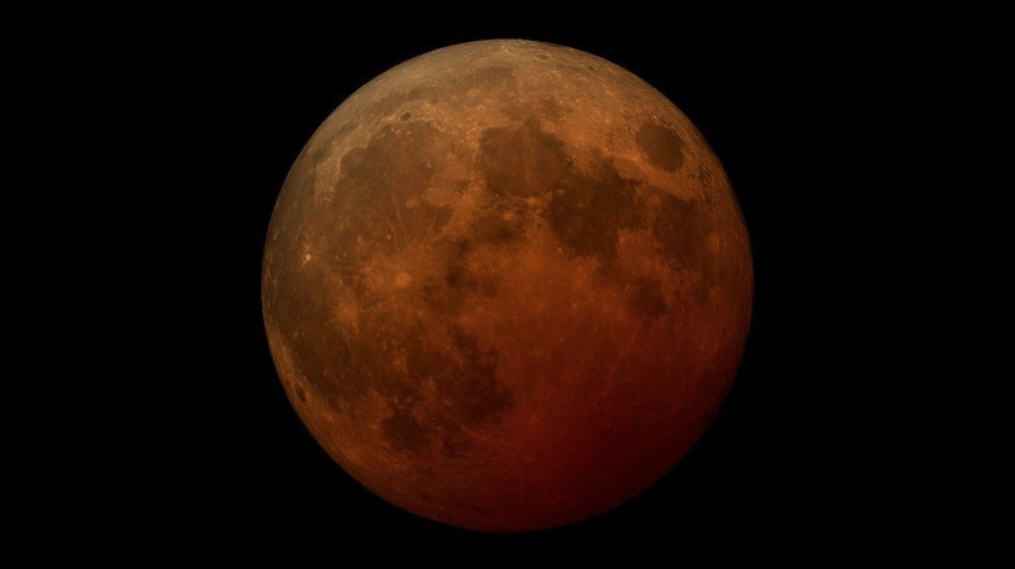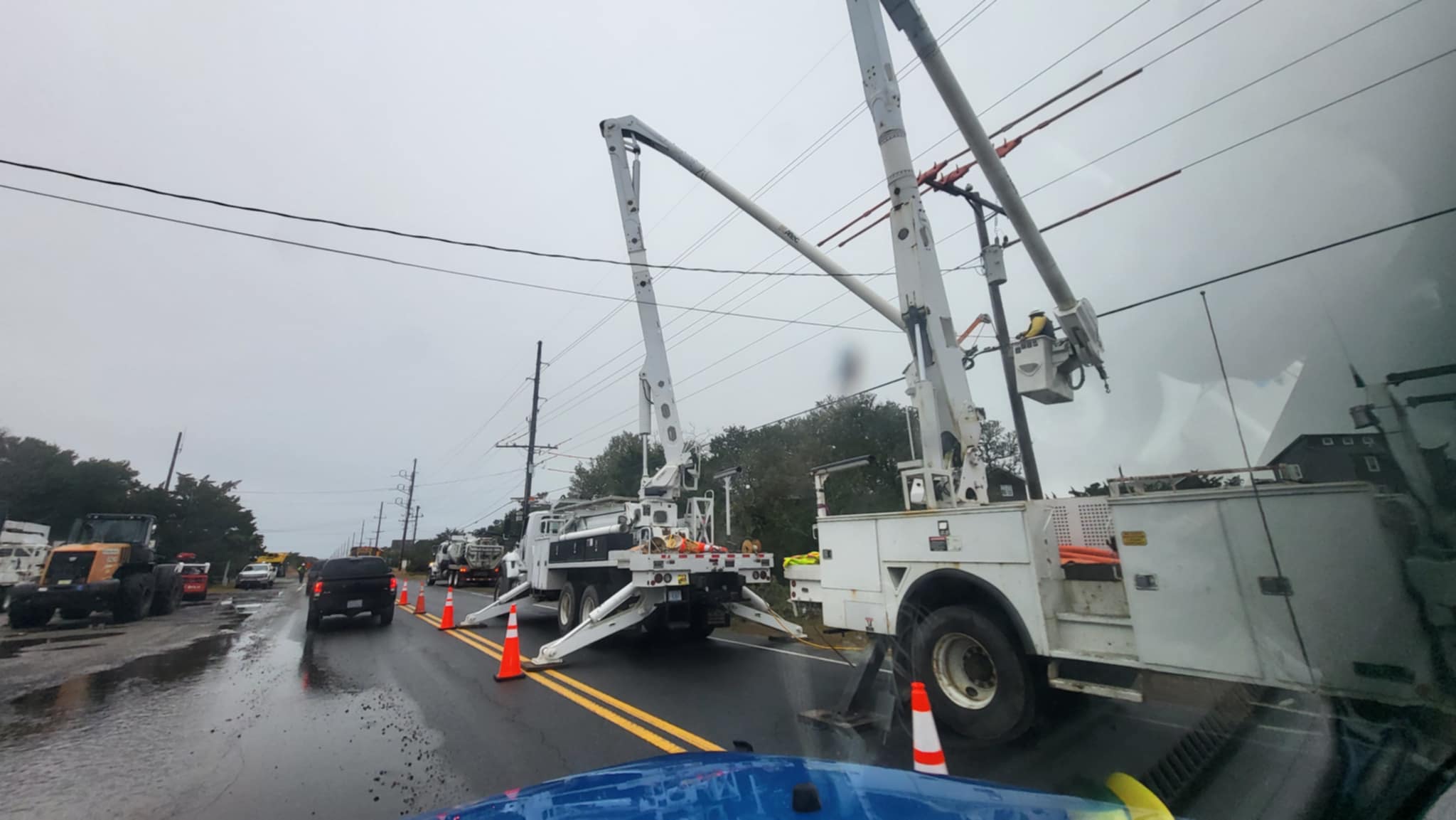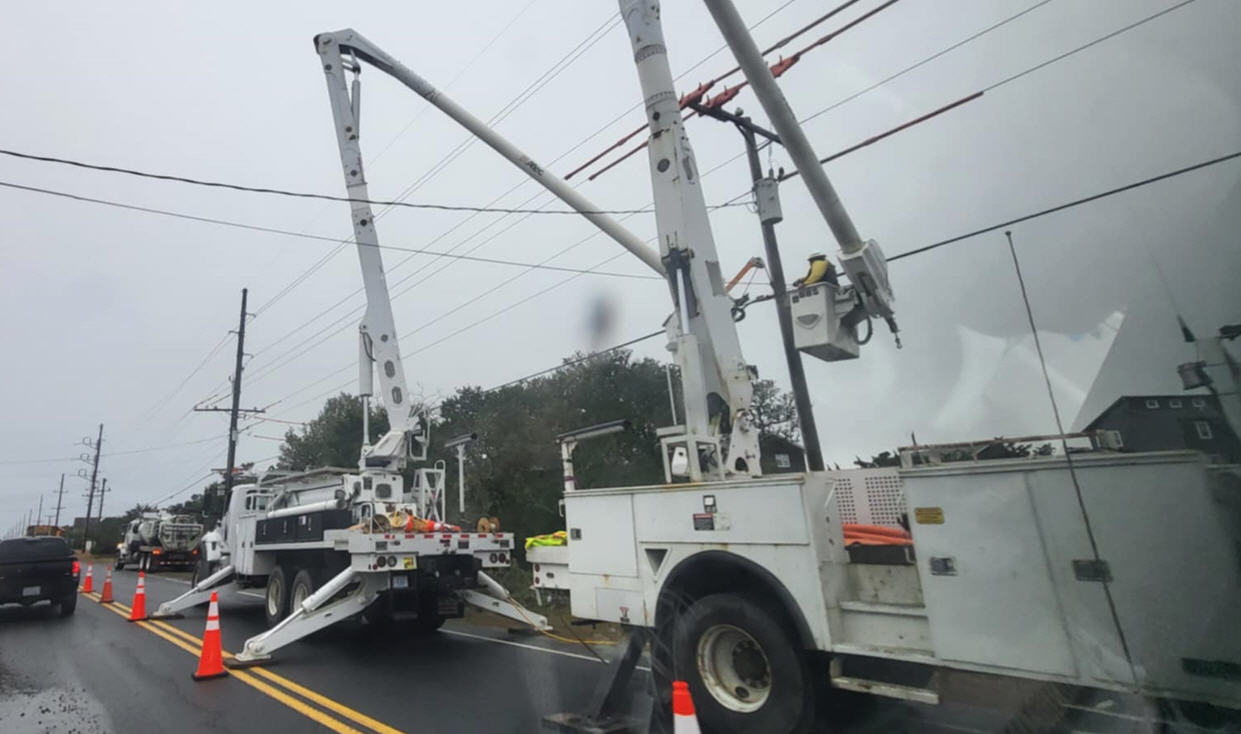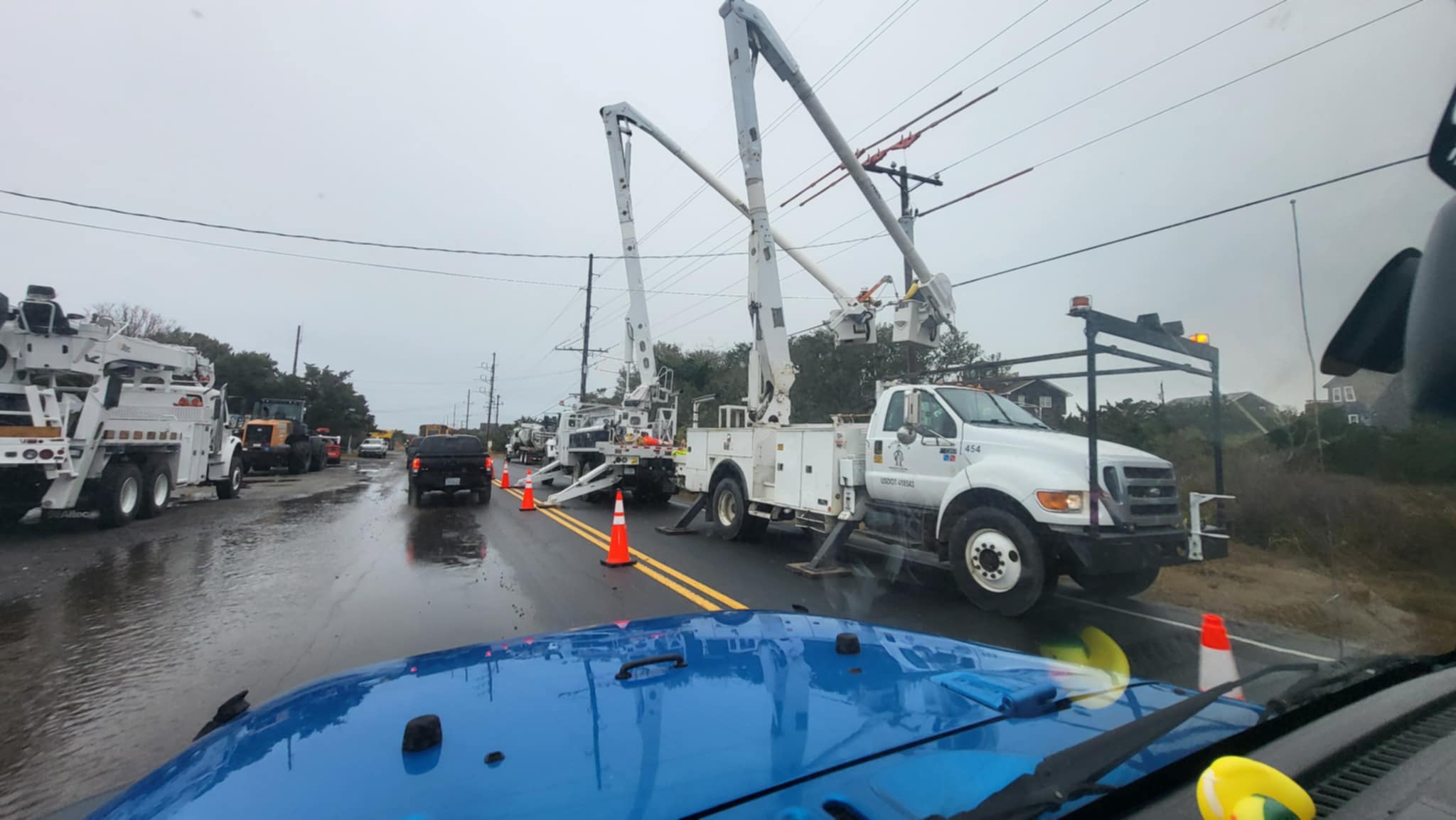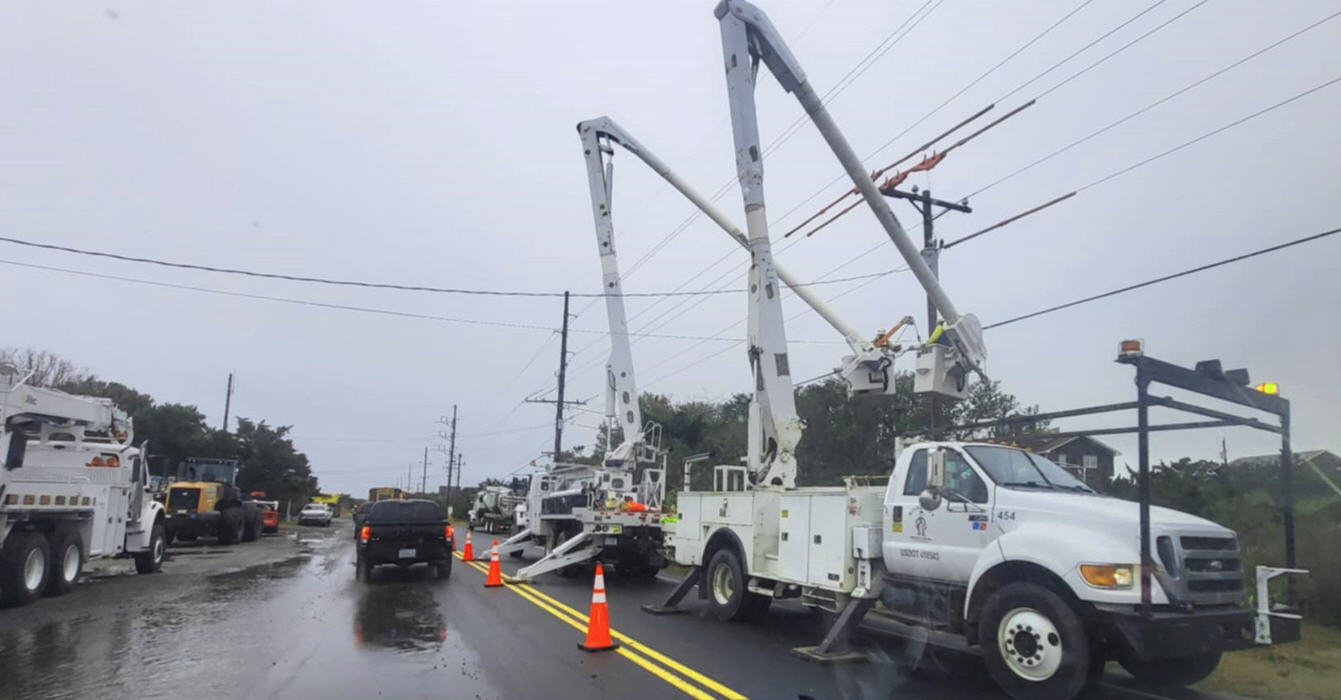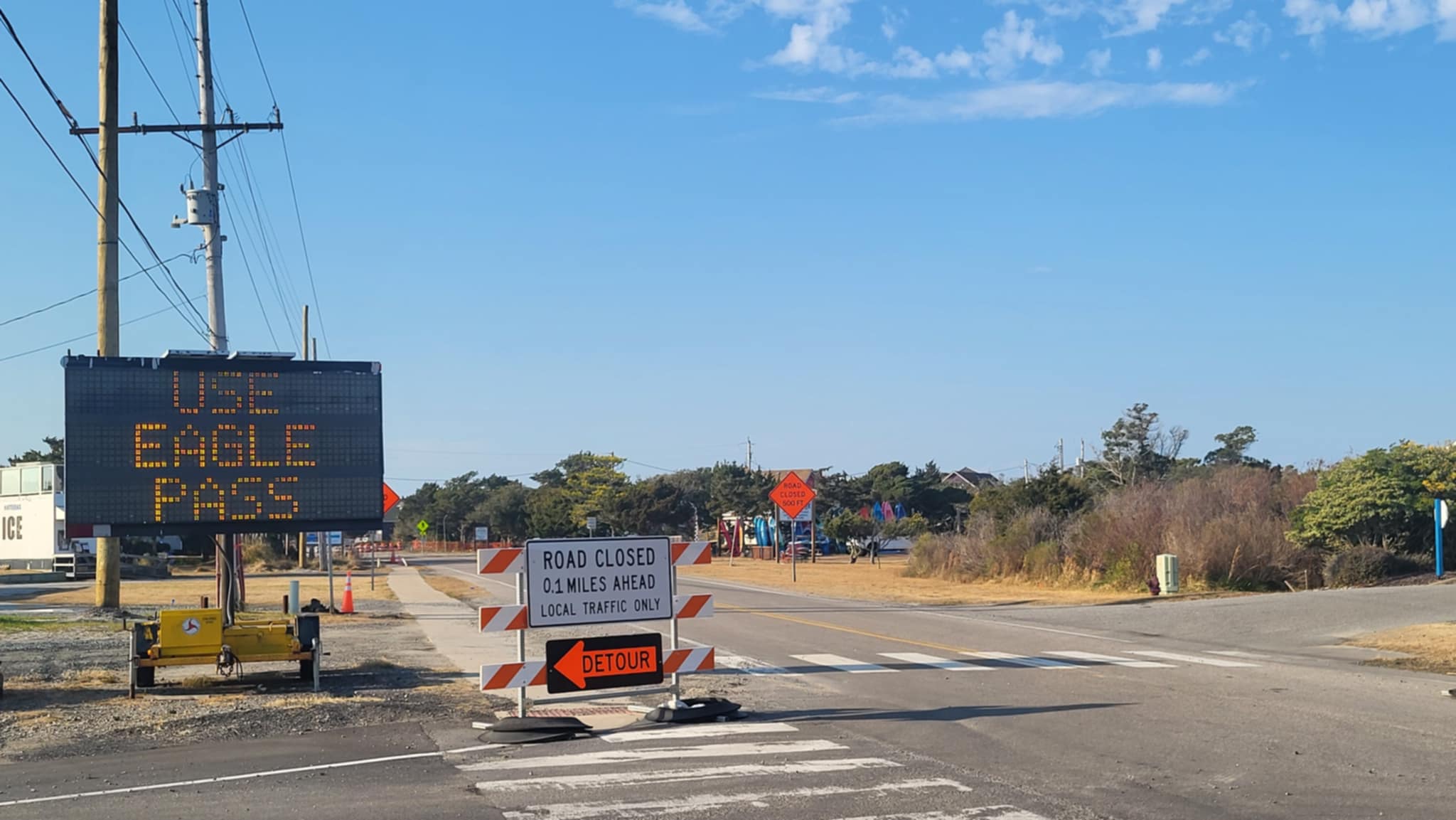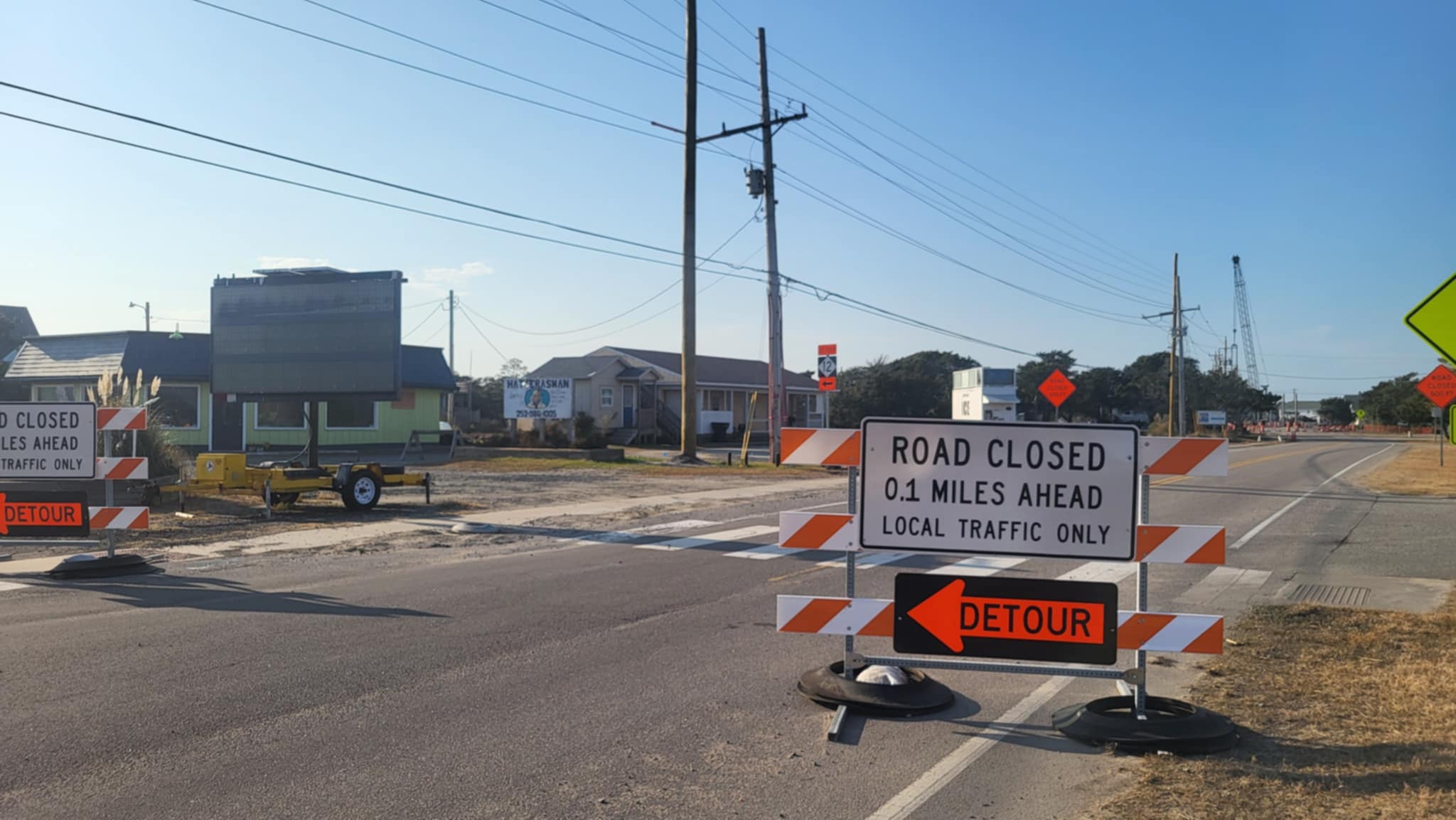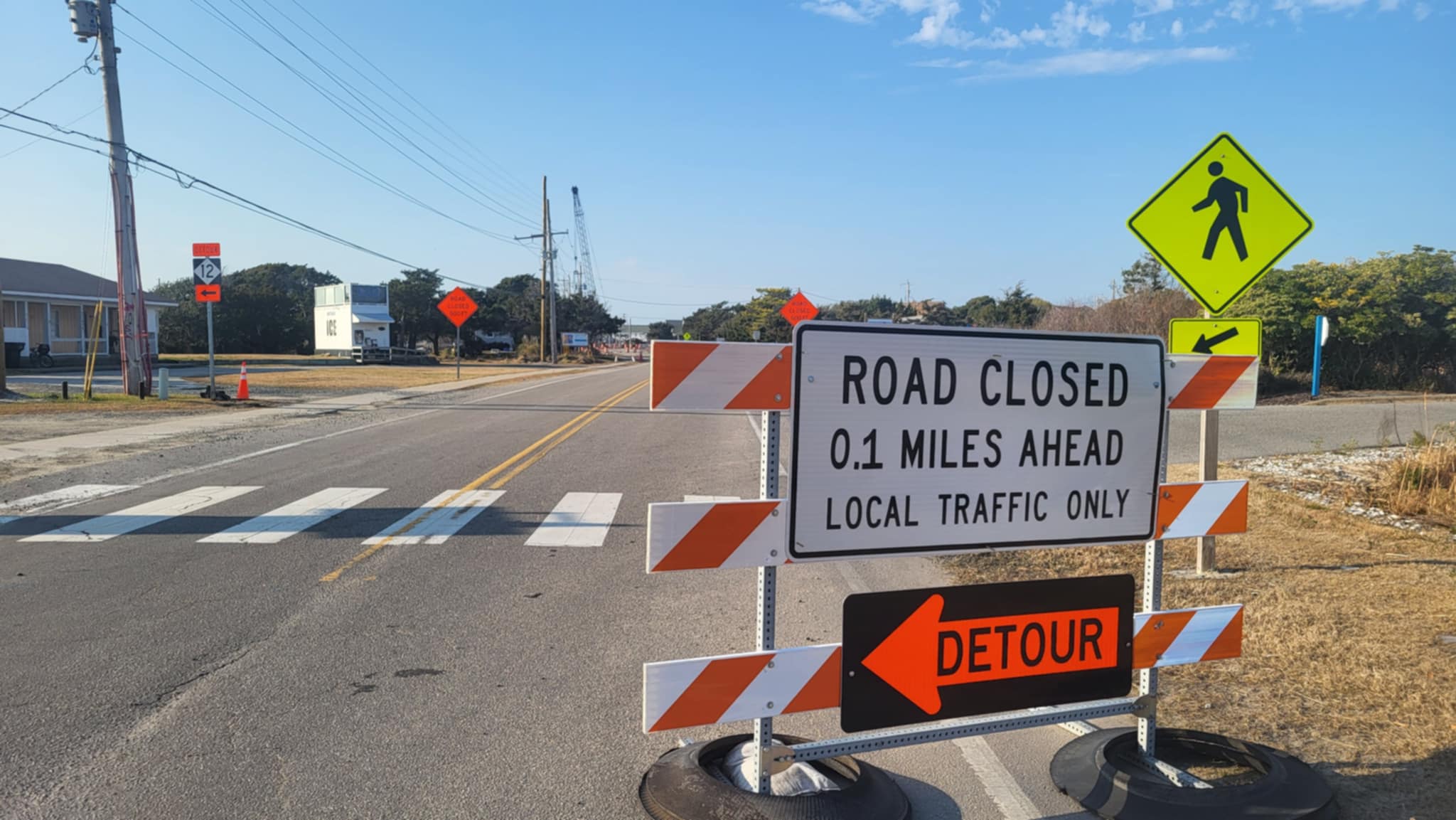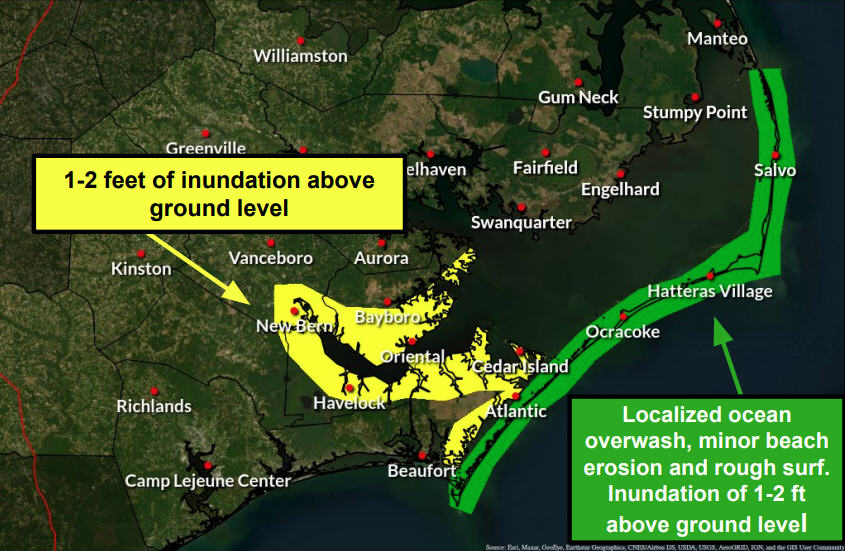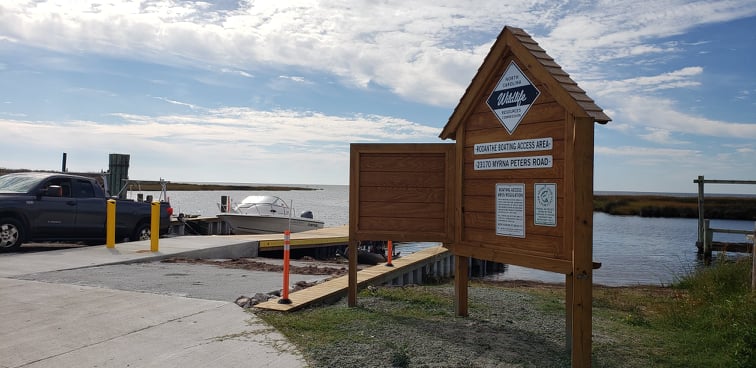Dig for Civil War cannons at Hatteras Inlet ends in disappointment BY CATHERINE KOZAK
Dig for Civil War cannons at Hatteras
Inlet ends in disappointment
BY CATHERINE KOZAK
BY CATHERINE KOZAK
BY CATHERINE KOZAK
They had maps, ground-penetrating radar images, and historical accounts all pointing to two buried cannons where the Civil War battle at Fort Clark raged 150 years ago at Hatteras Inlet.
Early one morning last August, under the direction of Cape Hatteras National Seashore historian Doug Stover and assisted by Graveyard of the Atlantic Museum executive director Joseph Schwarzer, Hatteras Island residents Danny Couch and Mel Covey joined an effort to recover the historic cannons in time to mark the sesquicentennial of the battle later that month.
As the dig began, Couch said he had high hopes. In the same breath, he said it’s never good to be cocky, citing the 1986 program when Geraldo Rivera opened Al Capone’s vault on television, only to find it was empty.
“There’s the fear you live with,” Couch said. “But, you know, we did our homework.”
Stover said that the information was too intriguing to ignore.
“We can’t leave two 32-pound cannons underground without investigating,” he said as an excavator scooped out sand in a staked out area behind the beach, southwest of Ramp 55.
“It would be a major discovery, yeah, finding those cannons. It’s been over 50 years since they’ve found anything like this.”
But after six hours of digging, the search was abruptly shut down by the Occupational and Safety and Health Administration, which had notified park officials that the pit was not dug to the agency’s standards.
“I did not see this coming,” Covey said. “This is frustrating. I thought we had two days of digging.”
It was Covey’s research in the mid-1990s that had led to the discovery of Fort Clark, an earthen structure built by the Confederates to fortify the inlet at the start of the war.
In 1998, a team of East Carolina University archaeologists investigated the site and found hundreds of artifacts, including coins, buttons, musket balls, and artillery shells.
The Union attack on Fort Clark and nearby Fort Hatteras on Aug. 29, 1861, was the first Naval victory for the Union in the Civil War, securing a critical passage to southern land.
Couch, a history buff from Buxton, said that Confederates built Fort Hatteras — now underwater — about 225 yards away to guard both sides of the inlet.
“They were strategically positioned to provide a crossfire for hostile ships entering the inlet,” he said. But the Confederates couldn’t withstand the force of what was essentially the entire federal fleet.
“It was a very intense bombardment,” Couch said of the 3-hour, 20-minute battle. It was so bad, he added, that at the time it was regarded as one of worst naval bombardments “known to mankind.”
After the Union seized the fort, the aforementioned cannons were deemed outmoded and were buried. The cast iron armaments, which were described as long as 15 feet, shot 6-inch diameter solid cannon balls.
When an aerial photograph taken after Hurricane Isabel in September, 2003, during a North Carolina Forest Service flyover revealed a cannon-shaped object in front of the site of Fort Clark, interest was immediately piqued. Before long, Covey was called.
Working off of the Forest Service photograph — which showed mostly a wide white area stripped of vegetation by storm surge —a NASA ground-penetrating radar image, and data from Park Service surveys, Covey and Beaufort-based Surface Interval Diving Company staked out a 40-by-40-foot area behind the dune line to investigate.
The hope was that at least one cannon could be unearthed and brought to the Graveyard of the Atlantic Museum, and the other would be unveiled during the “Flags Over Hatteras” Civil War sesquicentennial event, which had been planned for Aug. 22-28 at the museum but was cancelled because of Hurricane Irene.
As the machine clawed out the increasingly mucky material from the area, depositing it in mounds on the edge of the hole, about a dozen or so people peered steadily into the opening, looking and listening for any sign of a cannon.
“Come on, come on, “ Couch implored as the long arm reached into the black slurry. “Give us that clunk!”
Periodically, the digging would stop and Couch and Covey, among others, would take a metal detector and magnetometer down into the pit with them and scan for a signal. Shortly before the dig was stopped, Covey was up to his chest in water, moving the magnetometer through the groundwater filling the 11-foot deep hole.
The cannon was not where it was expected to be, and at Covey’s suggestion, it was agreed to check the other side of the staked area.
“There’s something down there — there’s something wrong,” Schwarzer said as he watched. “You don’t get images like that with sub-surface radar. . . This is just bizarre.”
Then, without explanation, the search for the cannons was ordered stopped.
As everyone quietly packed up to leave, Stover said that the site will be re-surveyed, and, if possible, it will be explored again this year.
Covey said that the crew may have to dig deeper to find the artifacts.
Looking tired, Couch gathered his belongings.
They had maps, ground-penetrating radar images, and historical accounts all pointing to two buried cannons where the Civil War battle at Fort Clark raged 150 years ago at Hatteras Inlet.
Early one morning last August, under the direction of Cape Hatteras National Seashore historian Doug Stover and assisted by Graveyard of the Atlantic Museum executive director Joseph Schwarzer, Hatteras Island residents Danny Couch and Mel Covey joined an effort to recover the historic cannons in time to mark the sesquicentennial of the battle later that month.
As the dig began, Couch said he had high hopes. In the same breath, he said it’s never good to be cocky, citing the 1986 program when Geraldo Rivera opened Al Capone’s vault on television, only to find it was empty.
“There’s the fear you live with,” Couch said. “But, you know, we did our homework.”
Stover said that the information was too intriguing to ignore.
“We can’t leave two 32-pound cannons underground without investigating,” he said as an excavator scooped out sand in a staked out area behind the beach, southwest of Ramp 55.
“It would be a major discovery, yeah, finding those cannons. It’s been over 50 years since they’ve found anything like this.”
But after six hours of digging, the search was abruptly shut down by the Occupational and Safety and Health Administration, which had notified park officials that the pit was not dug to the agency’s standards.
“I did not see this coming,” Covey said. “This is frustrating. I thought we had two days of digging.”
It was Covey’s research in the mid-1990s that had led to the discovery of Fort Clark, an earthen structure built by the Confederates to fortify the inlet at the start of the war.
In 1998, a team of East Carolina University archaeologists investigated the site and found hundreds of artifacts, including coins, buttons, musket balls, and artillery shells.
The Union attack on Fort Clark and nearby Fort Hatteras on Aug. 29, 1861, was the first Naval victory for the Union in the Civil War, securing a critical passage to southern land.
Couch, a history buff from Buxton, said that Confederates built Fort Hatteras — now underwater — about 225 yards away to guard both sides of the inlet.
“They were strategically positioned to provide a crossfire for hostile ships entering the inlet,” he said. But the Confederates couldn’t withstand the force of what was essentially the entire federal fleet.
“It was a very intense bombardment,” Couch said of the 3-hour, 20-minute battle. It was so bad, he added, that at the time it was regarded as one of worst naval bombardments “known to mankind.”
After the Union seized the fort, the aforementioned cannons were deemed outmoded and were buried. The cast iron armaments, which were described as long as 15 feet, shot 6-inch diameter solid cannon balls.
When an aerial photograph taken after Hurricane Isabel in September, 2003, during a North Carolina Forest Service flyover revealed a cannon-shaped object in front of the site of Fort Clark, interest was immediately piqued. Before long, Covey was called.
Working off of the Forest Service photograph — which showed mostly a wide white area stripped of vegetation by storm surge —a NASA ground-penetrating radar image, and data from Park Service surveys, Covey and Beaufort-based Surface Interval Diving Company staked out a 40-by-40-foot area behind the dune line to investigate.
The hope was that at least one cannon could be unearthed and brought to the Graveyard of the Atlantic Museum, and the other would be unveiled during the “Flags Over Hatteras” Civil War sesquicentennial event, which had been planned for Aug. 22-28 at the museum but was cancelled because of Hurricane Irene.
As the machine clawed out the increasingly mucky material from the area, depositing it in mounds on the edge of the hole, about a dozen or so people peered steadily into the opening, looking and listening for any sign of a cannon.
“Come on, come on, “ Couch implored as the long arm reached into the black slurry. “Give us that clunk!”
Periodically, the digging would stop and Couch and Covey, among others, would take a metal detector and magnetometer down into the pit with them and scan for a signal. Shortly before the dig was stopped, Covey was up to his chest in water, moving the magnetometer through the groundwater filling the 11-foot deep hole.
The cannon was not where it was expected to be, and at Covey’s suggestion, it was agreed to check the other side of the staked area.
“There’s something down there — there’s something wrong,” Schwarzer said as he watched. “You don’t get images like that with sub-surface radar. . . This is just bizarre.”
Then, without explanation, the search for the cannons was ordered stopped.
As everyone quietly packed up to leave, Stover said that the site will be re-surveyed, and, if possible, it will be explored again this year.
Covey said that the crew may have to dig deeper to find the artifacts.
Looking tired, Couch gathered his belongings.
They had maps, ground-penetrating radar images, and historical accounts all pointing to two buried cannons where the Civil War battle at Fort Clark raged 150 years ago at Hatteras Inlet.
Early one morning last August, under the direction of Cape Hatteras National Seashore historian Doug Stover and assisted by Graveyard of the Atlantic Museum executive director Joseph Schwarzer, Hatteras Island residents Danny Couch and Mel Covey joined an effort to recover the historic cannons in time to mark the sesquicentennial of the battle later that month.
As the dig began, Couch said he had high hopes. In the same breath, he said it’s never good to be cocky, citing the 1986 program when Geraldo Rivera opened Al Capone’s vault on television, only to find it was empty.
“There’s the fear you live with,” Couch said. “But, you know, we did our homework.”
Stover said that the information was too intriguing to ignore.
“We can’t leave two 32-pound cannons underground without investigating,” he said as an excavator scooped out sand in a staked out area behind the beach, southwest of Ramp 55.
“It would be a major discovery, yeah, finding those cannons. It’s been over 50 years since they’ve found anything like this.”
But after six hours of digging, the search was abruptly shut down by the Occupational and Safety and Health Administration, which had notified park officials that the pit was not dug to the agency’s standards.
“I did not see this coming,” Covey said. “This is frustrating. I thought we had two days of digging.”
It was Covey’s research in the mid-1990s that had led to the discovery of Fort Clark, an earthen structure built by the Confederates to fortify the inlet at the start of the war.
In 1998, a team of East Carolina University archaeologists investigated the site and found hundreds of artifacts, including coins, buttons, musket balls, and artillery shells.
The Union attack on Fort Clark and nearby Fort Hatteras on Aug. 29, 1861, was the first Naval victory for the Union in the Civil War, securing a critical passage to southern land.
Couch, a history buff from Buxton, said that Confederates built Fort Hatteras — now underwater — about 225 yards away to guard both sides of the inlet.
“They were strategically positioned to provide a crossfire for hostile ships entering the inlet,” he said. But the Confederates couldn’t withstand the force of what was essentially the entire federal fleet.
“It was a very intense bombardment,” Couch said of the 3-hour, 20-minute battle. It was so bad, he added, that at the time it was regarded as one of worst naval bombardments “known to mankind.”
After the Union seized the fort, the aforementioned cannons were deemed outmoded and were buried. The cast iron armaments, which were described as long as 15 feet, shot 6-inch diameter solid cannon balls.
When an aerial photograph taken after Hurricane Isabel in September, 2003, during a North Carolina Forest Service flyover revealed a cannon-shaped object in front of the site of Fort Clark, interest was immediately piqued. Before long, Covey was called.
Working off of the Forest Service photograph — which showed mostly a wide white area stripped of vegetation by storm surge —a NASA ground-penetrating radar image, and data from Park Service surveys, Covey and Beaufort-based Surface Interval Diving Company staked out a 40-by-40-foot area behind the dune line to investigate.
The hope was that at least one cannon could be unearthed and brought to the Graveyard of the Atlantic Museum, and the other would be unveiled during the “Flags Over Hatteras” Civil War sesquicentennial event, which had been planned for Aug. 22-28 at the museum but was cancelled because of Hurricane Irene.
As the machine clawed out the increasingly mucky material from the area, depositing it in mounds on the edge of the hole, about a dozen or so people peered steadily into the opening, looking and listening for any sign of a cannon.
“Come on, come on, “ Couch implored as the long arm reached into the black slurry. “Give us that clunk!”
Periodically, the digging would stop and Couch and Covey, among others, would take a metal detector and magnetometer down into the pit with them and scan for a signal. Shortly before the dig was stopped, Covey was up to his chest in water, moving the magnetometer through the groundwater filling the 11-foot deep hole.
The cannon was not where it was expected to be, and at Covey’s suggestion, it was agreed to check the other side of the staked area.
“There’s something down there — there’s something wrong,” Schwarzer said as he watched. “You don’t get images like that with sub-surface radar. . . This is just bizarre.”
Then, without explanation, the search for the cannons was ordered stopped.
As everyone quietly packed up to leave, Stover said that the site will be re-surveyed, and, if possible, it will be explored again this year.
Covey said that the crew may have to dig deeper to find the artifacts.
Looking tired, Couch gathered his belongings.
They had maps, ground-penetrating radar images, and historical accounts all pointing to two buried cannons where the Civil War battle at Fort Clark raged 150 years ago at Hatteras Inlet.
Early one morning last August, under the direction of Cape Hatteras National Seashore historian Doug Stover and assisted by Graveyard of the Atlantic Museum executive director Joseph Schwarzer, Hatteras Island residents Danny Couch and Mel Covey joined an effort to recover the historic cannons in time to mark the sesquicentennial of the battle later that month.
As the dig began, Couch said he had high hopes. In the same breath, he said it’s never good to be cocky, citing the 1986 program when Geraldo Rivera opened Al Capone’s vault on television, only to find it was empty.
“There’s the fear you live with,” Couch said. “But, you know, we did our homework.”
Stover said that the information was too intriguing to ignore.
“We can’t leave two 32-pound cannons underground without investigating,” he said as an excavator scooped out sand in a staked out area behind the beach, southwest of Ramp 55.
“It would be a major discovery, yeah, finding those cannons. It’s been over 50 years since they’ve found anything like this.”
But after six hours of digging, the search was abruptly shut down by the Occupational and Safety and Health Administration, which had notified park officials that the pit was not dug to the agency’s standards.
“I did not see this coming,” Covey said. “This is frustrating. I thought we had two days of digging.”
It was Covey’s research in the mid-1990s that had led to the discovery of Fort Clark, an earthen structure built by the Confederates to fortify the inlet at the start of the war.
In 1998, a team of East Carolina University archaeologists investigated the site and found hundreds of artifacts, including coins, buttons, musket balls, and artillery shells.
The Union attack on Fort Clark and nearby Fort Hatteras on Aug. 29, 1861, was the first Naval victory for the Union in the Civil War, securing a critical passage to southern land.
Couch, a history buff from Buxton, said that Confederates built Fort Hatteras — now underwater — about 225 yards away to guard both sides of the inlet.
“They were strategically positioned to provide a crossfire for hostile ships entering the inlet,” he said. But the Confederates couldn’t withstand the force of what was essentially the entire federal fleet.
“It was a very intense bombardment,” Couch said of the 3-hour, 20-minute battle. It was so bad, he added, that at the time it was regarded as one of worst naval bombardments “known to mankind.”
After the Union seized the fort, the aforementioned cannons were deemed outmoded and were buried. The cast iron armaments, which were described as long as 15 feet, shot 6-inch diameter solid cannon balls.
When an aerial photograph taken after Hurricane Isabel in September, 2003, during a North Carolina Forest Service flyover revealed a cannon-shaped object in front of the site of Fort Clark, interest was immediately piqued. Before long, Covey was called.
Working off of the Forest Service photograph — which showed mostly a wide white area stripped of vegetation by storm surge —a NASA ground-penetrating radar image, and data from Park Service surveys, Covey and Beaufort-based Surface Interval Diving Company staked out a 40-by-40-foot area behind the dune line to investigate.
The hope was that at least one cannon could be unearthed and brought to the Graveyard of the Atlantic Museum, and the other would be unveiled during the “Flags Over Hatteras” Civil War sesquicentennial event, which had been planned for Aug. 22-28 at the museum but was cancelled because of Hurricane Irene.
As the machine clawed out the increasingly mucky material from the area, depositing it in mounds on the edge of the hole, about a dozen or so people peered steadily into the opening, looking and listening for any sign of a cannon.
“Come on, come on, “ Couch implored as the long arm reached into the black slurry. “Give us that clunk!”
Periodically, the digging would stop and Couch and Covey, among others, would take a metal detector and magnetometer down into the pit with them and scan for a signal. Shortly before the dig was stopped, Covey was up to his chest in water, moving the magnetometer through the groundwater filling the 11-foot deep hole.
The cannon was not where it was expected to be, and at Covey’s suggestion, it was agreed to check the other side of the staked area.
“There’s something down there — there’s something wrong,” Schwarzer said as he watched. “You don’t get images like that with sub-surface radar. . . This is just bizarre.”
Then, without explanation, the search for the cannons was ordered stopped.
As everyone quietly packed up to leave, Stover said that the site will be re-surveyed, and, if possible, it will be explored again this year.
Covey said that the crew may have to dig deeper to find the artifacts.
Looking tired, Couch gathered his belongings.
Subject
Name
(required, will not be published)
(required, will not be published)
City :
State :
Your Comments:
May be posted on the Letters to the Editor page at the discretion of the editor.
May be posted on the Letters to the Editor page at the discretion of the editor.
May be posted on the Letters to the Editor page at the discretion of the editor.
May be posted on the Letters to the Editor page at the discretion of the editor.







